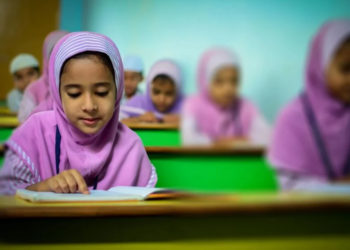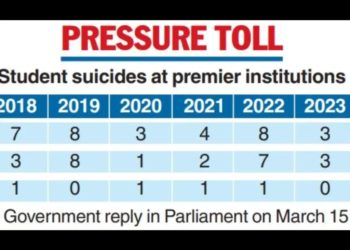
On November 09, the Supreme Court (SC) passed its judgement in the Ram Janambhoomi-Babri Masjid case as part of which the entire 2.77 acres of disputed land has been given for construction of the Ram temple and the government has been directed to provide 5 acres of land elsewhere for the construction of a mosque. With the exception of a few, every leader of political or social importance is making an appeal to the common people to maintain peace and communal harmony in the wake of this judgement. Prime Minister Narendra Modi has said, “After the verdict, the way every section of society, of every religion, has welcomed it, is a proof of India’s ancient culture and tradition of social harmony.” He also said that “the calm and peace maintained by 130 crore Indians in the run-up to today’s verdict manifests India’s inherent commitment to peaceful coexistence.” The Rashtriya Swayamsevak Sangh chief has made an appeal urging “the people of India to maintain law and order.” Whereas Lal Krishna Advani said, “I stand vindicated, and feel deeply blessed…” It will be interesting to see how the Court will now judge him as an accused in the Babri Masjid demolition case.
The SC observed, “As regards the inner courtyard, there is evidence on preponderance of probabilities to establish worship by the Hindus prior to the annexation of Oudh by the British in 1857. The Muslims have offered no evidence to indicate that they were in exclusive possession of the inner structure prior to 1857 since the date of construction in the sixteenth century.” This has been the basis of handing over the disputed site to Hindus. It further observed, “The exclusion of the Muslim from worship and possession took place on the intervening night between 22/23 December 1949 when the mosque was desecrated by the installation of Hindu idols.” The judgement also said, “The Muslims have been wrongly deprived of a mosque which had been constructed well over 450 years.”
Also read | Why is IIM Ahmedabad ignoring the caste reality of India?
While acknowledging Muslims offering namaz from 1857 to 1949 in the inner structure but saying there is no evidence of this before 1857, although accepting that the mosque existed for at least 450 years, the judgement says, “Dividing the land will not subserve the interest of either of the parties or secure a lasting sense of peace and tranquility,” and offered the land to Hindus. It tried to balance the judgement by saying, “Justice would not prevail if the court were to overlook the entitlement of the Muslims who have been deprived of the structure of the mosque through means which should not have been employed in a secular nation committed to the rule of law. The Constitution postulates the equality of all (emphasis in the judgement) faiths. Tolerance and mutual co-existence nourish the secular commitment of our nation and its people.”
The purpose of the judgement and the national appeals, before and after the delivery of judgement — issued by authorities as well as social-political leaderships — are understandable. At best the judgement is a compromise to appease the majority while assuaging the feelings of minority, whether justice has been done is questionable. Similar to the clampdown in Jammu and Kashmir, a tight security control ensured that “peace” would be prevailed.
The first two authors [Sandeep Pandey and Yugal Kishore Shastri] were not allowed to hold a two day communal harmony workshop on August 17–18, 2019, at Ram Janaki temple at Saryu Kunj in Ayodhya, where Professor Ram Puniyani was to speak. Notices were issued soon after that by the Resident Magistrate of Ayodhya prohibiting them from opening a bank account of their “Sarva Dharm Sadbhav Trust.” The Sarva Dharm Sadbhav Trust has plans to build a multi-faith harmony centre in Ayodhya to convey the message that Ayodhya, sacred to at least five religions — Hinduism, Islam, Buddhism, Jainism and Sikhism, is a place which is a symbol of communal harmony. They were detained again on August 19 when they wanted to hold a press conference at the temple. The Government obviously didn’t want any other point of view, than in favour of Ram temple, to be expressed by anybody for the last four months. This is how “peace” and “social harmony” has been enforced upon the country.
Also read | नागालैंड स्वायत्तता: कश्मीर के बाद, क्या भारत सरकार इस वादे से भी मुकर जाएगी?
If such a tight control had been observed in 1992, when Bhartiya Janata Party’s government was in power in Uttar Pradesh, probably the mosque would not have been demolished. The then Chief Minister of UP, Kalyan Singh, went back on his word given to the Supreme Court, that he would be faithful to the Constitution, to claim that he was a RSS worker first and a CM later, after the mosque was demolished. In 2002, in spite of PM Atal Behari Vajpayee admonishing Narendra Modi, the then CM of Gujarat, to follow “Rajdharm”, and Defence Minister George Fernandes wanting to deploy Army, rioting went on in Gujarat for three days. And we should remember that this violence was triggered by the burning of a train in Godhra carrying kar-sewaks who had gone to perform shila-pujan at Ayodhya, 17 years in advance of a judgement in favour of Ram temple. Earlier this year, Home Minister Amit Shah and RSS supremo Mohan Bhagwat, both rejected the SC judgement allowing entry of women of menstruating age to the Sabarimala temple in Kerala.
It is interesting that the politics of Hindtuva, built on violence and hatred, a politics that murdered Mahatma Gandhi, a politics that doesn’t care if a copy of the Constituion is burnt at Jantar-Mantar, that doesn’t think twice about brazenly flouting an unfavourable SC judgement, is displaying a new found faith in the Constiution and values like equality and fraternity enshrined in it, and respect for a favourable SC judgement. It is obvious that it has worked to build a consensus, taking most Muslim organisations on board and also the SC judges into confidence, to arrive at this judgment. But the larger question is, has this consensus for maintaining peace and harmony been built selectively only for the Ayodhya judgement?
Also read | क्या धर्म के नाम पर किसी की जान लेना जायज़ है?
If the BJP/RSS genuinely believe that peace and harmony should prevail from now on, can we expect no more mob-lynching incidents, killing of intellectuals, discrimination against minorities and dalits, and in general, no more politics of hate? Are they also going to respect the Places of Worship (Special Provisions) Act, 1991, which prohibits conversion of any place of worship? And conversion doesn’t always take place in the manner in which it has been done in Ayodhya. At Mazar mod in Indira Nagar, Lucknow, at a corner plot where Muslims used to offer namaz, gradually over years, after a stone was kept under a tree, Hindus have started worshipping a deity and now there is a Provincial Armed Constabulary camp at the site. In a TV channel discussion on Indian Ahead on 23 October, 2019, in anticipation of the Ayodhya judgement, in which the third author [Lubna Sarwath] was also invited, Vishwa Hindu Parishad spokesperson Vinod Bansal has admitted that they have a list of 30,000 sites in addition to Kashi and Mathura, where Hindu temples were demolished to build some Islamic structures. The working President of VHP Alok Kumar has said that the SC judgement on Ayodhya is not the end of the story, it is the beginning, in the context of Kashi and Mathura. Will the BJP/RSS top brass counsel the VHP leadership and make it clear to them that the appeal to maintain peace and harmony is meant for them as well?
The demolition of Babri Masjid invited the problem of terrorism to India. More such misadventure is going to plunge India into deeper problems.




